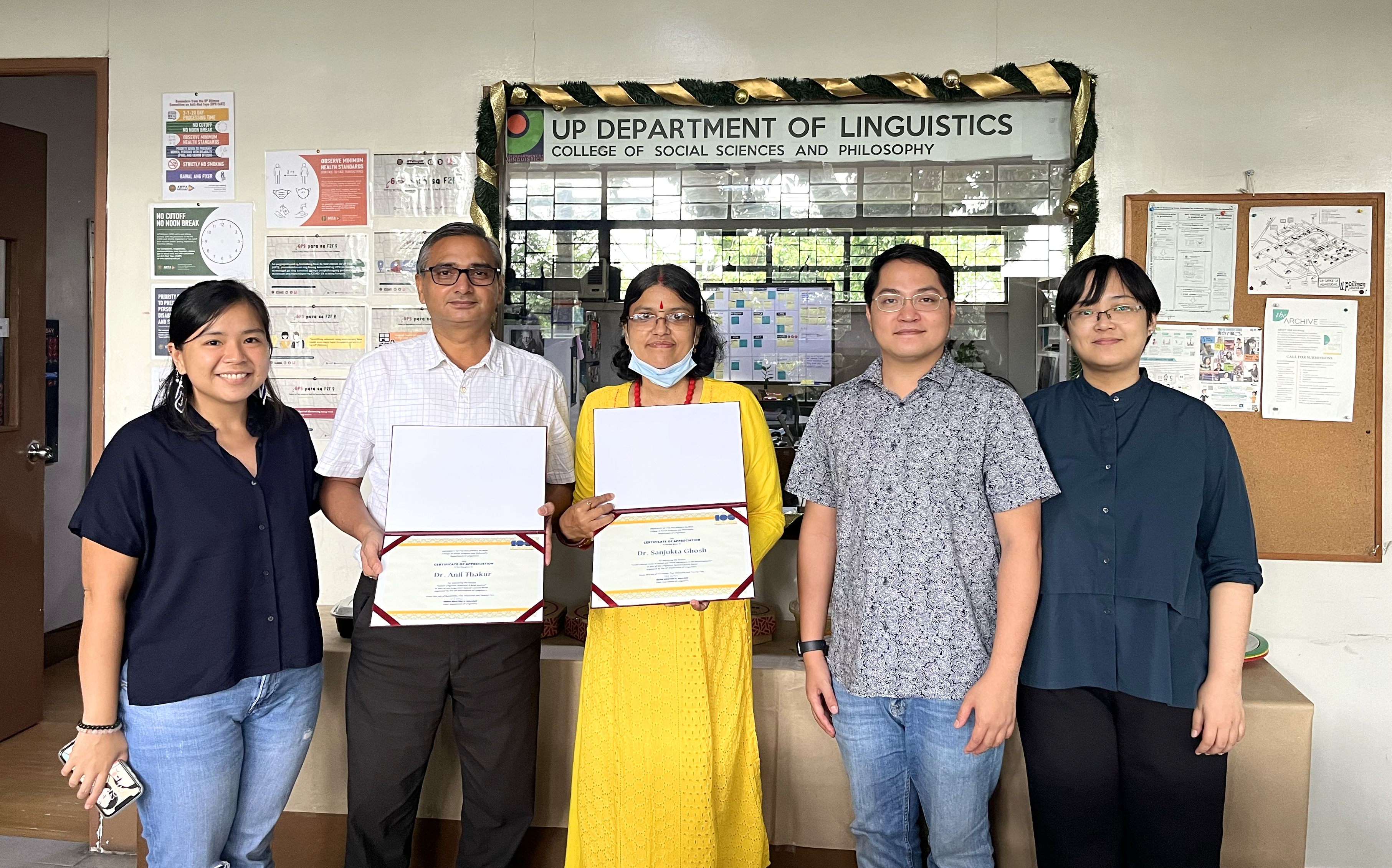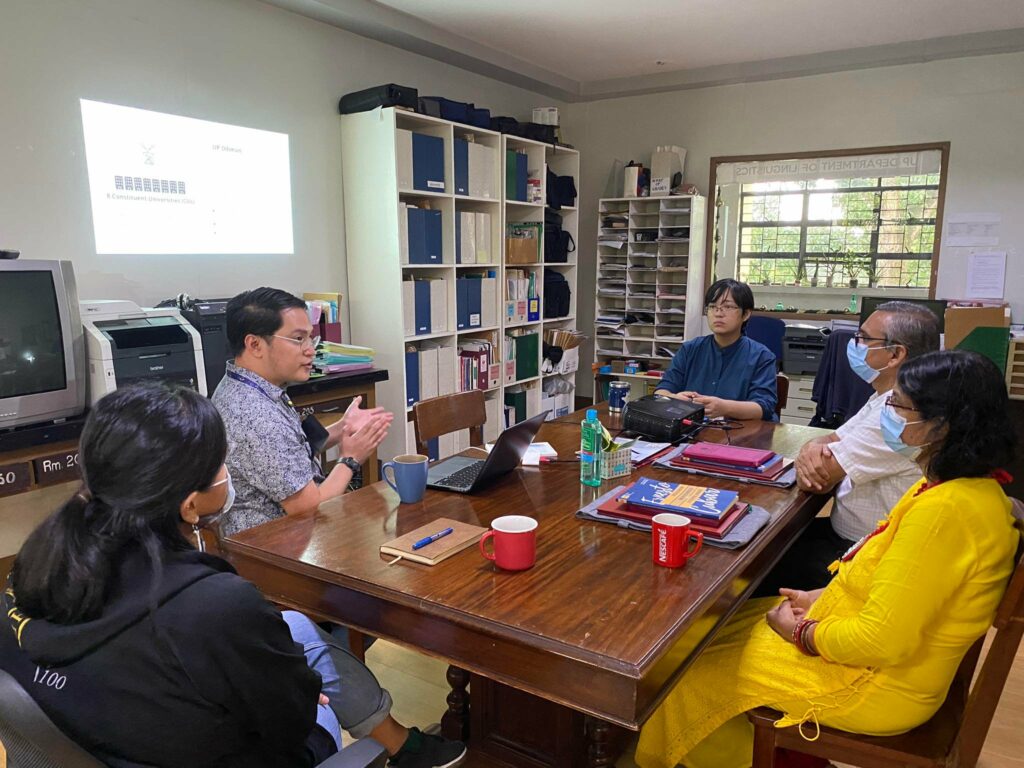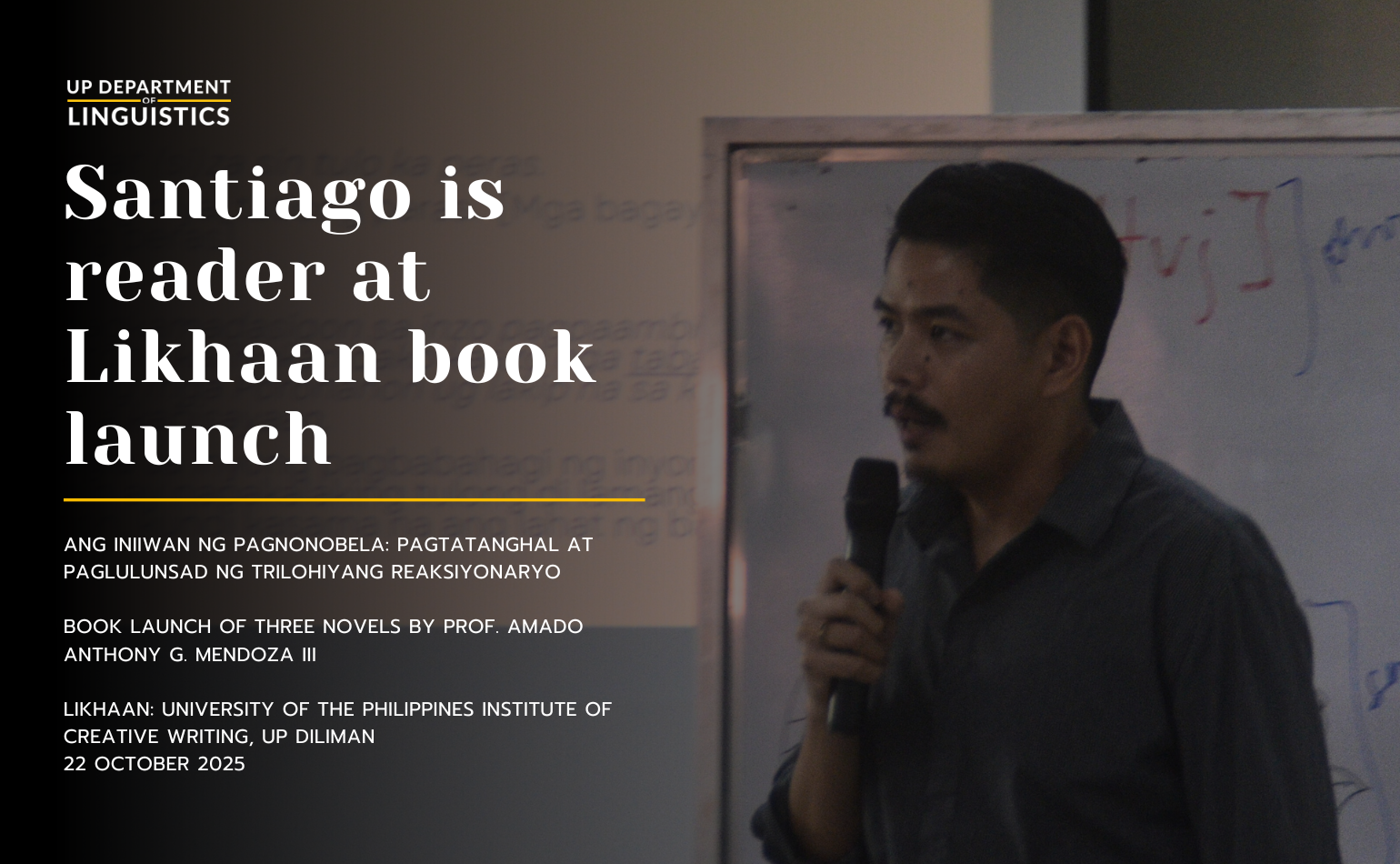
The Department hosted back-to-back talks for the 2022 Linguistics Special Lecture Series (LSLS) last November 4, featuring two scholars of Indian linguistics and language studies from the Indian Institute of Technology (BHU) Varanasi. These installments of the LSLS were organized as part of the Department’s celebration of its centennial anniversary.
Dr. Sanjukta Ghosh looked into the persuasive and affective strategies employed by advertisements in using verbal and visual metaphors. Her talk focused on “how metaphors and metonymy change the narrative of advertising cross-culturally” and “the role of social factors and culture on the creation of metaphors.” Dr. Ghosh shared Lakoff and Johnson’s (1980) observation that metaphors, which were once simply considered literary tools, connect language and cognition. Moreover, she cited Kövecses’ (2015) idea regarding the importance of contexts in which metaphorical meanings are presented. In analyzing television advertisements of multinational brands, understanding the physical environment and the socio-cultural situation is crucial since foreign companies usually capitalize on this collective context to make their products suitable for local scenarios.
As an example, while Coca-Cola slogans for English-speaking audiences generally aim for the concrete object to be understood in terms of abstract concepts, ads in Hindi use specific metaphors and metonymies that relate to coldness, affordability, and Indian celebrations and family ties. These, along with the supplemental visual cues, take into account the existing competition with local products, the chance to create a bigger market with their emphasis on the relevance of traditional festivals.
With ads for beauty products, Dr. Ghosh discussed some that are able to follow the international trend of shifting focus from physical or bodily aspects to the more abstract domains. Instead of highlighting the product’s quality, one Dove advertisement in India uses a tagline and image that, when closely examined, comment on the practice of “beauty testing” in arranged marriages in India. Meanwhile, the progressive ads of Sephora and L’Oreal in 2019 are in stark contrast to their ads in India where actresses and the products’ effects are still the focus.
Among Ghosh’s concluding points is the idea that “[t]he language of advertising can be a good point to start the study of the verbal as well as visual metaphors in cross-cultural contexts. This kind of study is useful for the marketing experts also to find out the efficacy of an advertisement and its persuasive effect.” This can also provide insights into how metaphors are formulated, as influenced by cultural, social, political, and historical contexts.
Dr. Anil Thakur’s presentation is an overview of the linguistic diversity in India. He first talked about the official status accorded to both Hindi and English, and expounded on the organization of the Indian territory into states based on scheduled languages recognized by the Constitution. He also pointed out that despite such a setup, language overlaps prevail in the regions and thus produce multilingual populations.
He then enumerated the various surveys conducted to identify the languages spoken in the subcontinent. The data he presented showed variation in figures, with numbers ranging from a hundred to over a thousand languages. The People’s Linguistic Survey of India (PLSI), a private research initiative in 2012, estimated that there exist more than 780 languages and over 66 different scripts. Unlike a previous survey, which only used the number of speakers as the basis for classification, the more comprehensive PLSI documented languages and created reports on their findings. Numbers produced by other surveys exposed the complications rooted in the use of the terms “language” and “dialect”, in relation to socio-political considerations and the different parameters for evaluation. Factors concerning speakers, such as language awareness, shift, death, and maintenance, also contribute to the constant fluctuation of estimates.
Language diversity is “recognized as an inherent characteristic feature” of Indian society. As to how this diversity is acknowledged and processed, Thakur cited cases of public-private partnerships, as well as projects that take advantage of technological developments. Offices such as the Language Division, the Central Institute of Indian Languages (CIIL), and the Hindi Directorate perform distinct functions related to surveying, documentation, revitalization, resource creation, and promotion of languages. And since the 1990s, researchers utilize innovations like machine translation, corpus generation, and digital documentation to expand the scope and capacity of linguistic study in the country. Dr. Thakur also mentioned the availability of grants at universities, institutions, and organizations that support the efforts of scholars and communities.
He ended his lecture by showing images that demonstrate how the many Indian languages and scripts co-exist in symbols and signages encountered in everyday life–scenarios that project both diversity and unity.
During the open forum, the audience sent questions for Dr. Ghosh about the possibility of multinational brand names replacing common names for local products, the favored language in advertisements, and the shifts in the kinds of metaphors-metonymies that could be observed in recent ads in India over time.
Dr. Thakur answered inquiries regarding the documentation of extinct languages, the possible emergence of new ones, and the attitudes of the people toward multilingualism. Both speakers were also asked to comment on the position of English vis-à-vis other local languages. Dr. Ghosh explained the phenomenon of English still being viewed as the language of opportunity, while Dr. Thakur shared about the government’s plan to replace English as the medium of instruction in higher education with official state languages.
After their talks, the speakers also met with assistant professors Kristina Gallego, Jem Javier, and Elsie Marie Or to discuss possible partnerships between the UPD Linguistics Department and the BHU Department of Humanistic Studies, and future collaborative research projects, including comparative studies to trace the influence of Sanskrit on Philippine languages.

You can watch the recording of the two lectures on the Department’s YouTube channel. Many thanks to Dr. Ghosh and Dr. Thakur for sharing their studies with us and to Asst. Prof. Jem Javier who moderated the webinar!
Published by Patricia Anne Asuncion



